The unusual species, Anthurium polyschistum, resembles hemp or palm, for they have grey-green palmate leaves, thriving with pretty straightforward care.
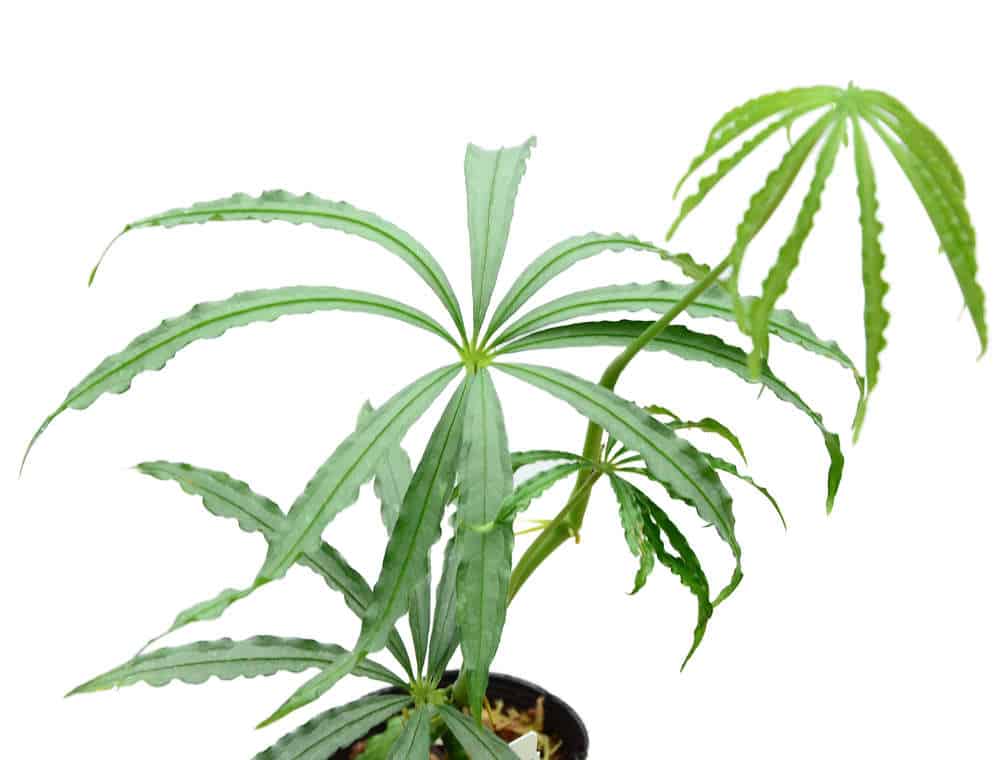
The variety polyschistum is difficult to recognize as an Anthurium since they do not have broad leaves, but you can not deny its origin.
Here’s a guide to help you get answers to the whys’, hows’ and ‘when’ involved in the care of Anthurium polyschistum.
Table of Contents Show
Overview of Anthurium Polyschistum
The literal meaning of polyschistum can be viewed by dissecting its generic name. In general, ‘schist’ means split into thin irregular plates, and ‘poly’ means many.
Thus, its name is derived from its thin split-leaf with 4-5 leaflets giving a palmatisect effect.

Furthermore, it is an epiphytic plant that spreads terrestrially and climbs up on finding some climbing surfaces.
Here is a table consisting of additional information about the Anthurium polyschistum.
| Scientific Name | Anthurium polyschistum |
| Common Names | Polyschistum Anthurium, False marijuana, and f\Faux marijuana |
| Origin | Southern America, especially, Brazil, Peru, Ecuador, Columbia |
| Family | Araceae |
| Plant Type | Tropical evergreen climbing epiphyte |
| Growth Zone | USDA Zone 10-12 |
| Growth Size | Length= About 80 inches Spread= About 12 inches |
| Grown For | Foliage |
| Foliage Type | Green, thin, split leaf like that of hemp |
| Blooms | All year; white to greenish color subtle inflorescence |
| Toxicity | Toxic to both humans and pets |
Anthurium Polyschistum: Ultimate Grow & Care Guide
You are mistaken if you think Anthurium polyschistum is challenging to care for. Not everything which stands as round pegs in the square holes is challenging to handle.
Yeah, you read it right. It is easy to moderate when it comes to caring requirements. If you give them the right environment, it flourishes exceptionally well.
Here are additional care tips for the Anthurium polyschistum.
| Parameters | Favorable Conditions |
|---|---|
| Sunlight | 7-8 hours of diffused light |
| Watering | Once a week in summer and once in 15 days in winter |
| Temperature | 60- 85 °F |
| Humidity | Above 70% of the relative humidity |
| Soil Type | Light, porous, chunky, nutrient-rich, well-draining soil |
| Fertilization | Once a month during growing season with balanced liquid fertilizer. |
| Pruning | Rare pruning, prune only damaged and dead parts |
| Pot | 5-8 inches pot; terracotta/clay or pot made up of coconut husk |
| Repotting | Once in 2-3 years |
| Propagation | Via division, stem cuttings, and seeds germination |
| Common Pests | Mealy bugs, Aphids, Scales, and Thrips |
| Horticultural Disease | Root rot, Bacterial blight, Black nose, and Leaf spot fungus |
1. Adequate Bright Filtered Light and Location
This remarkable variety of Anthurium adores bright filtered sunlight.
However, the plant is not fussy about its light requirements on the brighter side.
If you wonder whether you can grow them in medium light, the answer is a straight yes. However, avoid prolonged exposure to medium light.
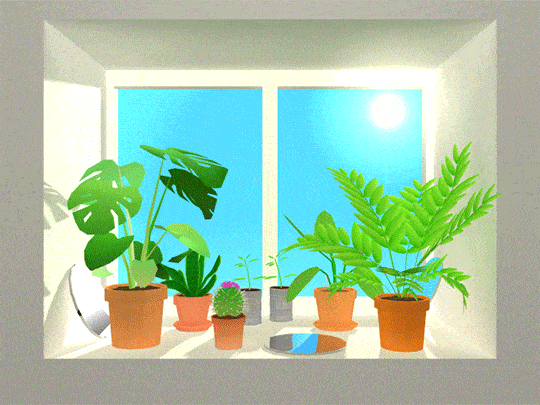
Also, it would be beneficial to introduce them to the morning or afternoon shades about twice a week.
Here is a table showing the list of issues you will encounter in case of lighting problems.
| Signs of Harsh Light | Signs of Low Light |
|---|---|
| Dry and crisp leaves especially along the edges | Loss of chlorophyll which causes loss of green pigmentation |
| Dark brown patches along with bleached foliage | Drooping and wilting of stems and leaves |
| Curling of leaves caused by excessive moisture loss | Leggy dull and stunted growth |
| Severe conditions might cause falling off leaves to reciprocate moisture loss | Hinderance in the photosynthesis and other physiological process |
Pro Tip: Provide your Anthurium polyschistum with a light intensity of range 1500-2000 for better growth.
Best Location for Anthurium Polyschistum
- Place your Anthurim polyschistum in shades under a tree or patio while growing outdoors. However, you need to be mindful that it receives only 30-40% of the total light intensity.
- While indoors, it requires 70-80% of the total light intensity.
- The best location to receive adequate sunlight is within 1-3 feet of the window.
- While choosing a window, opt for an eastern-facing window. However, a southern or western-facing window also works well.
Tips to Provide Adequate Light to Anthurium Polyschistum
- Anthurium is vulnerable to harsh light. Protect it against intense light using a light drape or curtain.
- Avoid sunny locations reflecting midday or afternoon sunlight.
- Opt for artificial light during winter, as the light intensity is naturally low.
- Do not shift the plant from a brighter location to a low-light area. It stresses the plant, and the leaves might droop.
Can I Grow Anthurium Polyschistum in Artificial Light/Grow Light?
Honestly, I grew my Anthurium polyschistum under artificial light, and it is doing well.
The room supports only low light. Hence, from my personal experience, I assure you that 8-10 hours of full-spectrum LED Light is ideal for polyschistum.
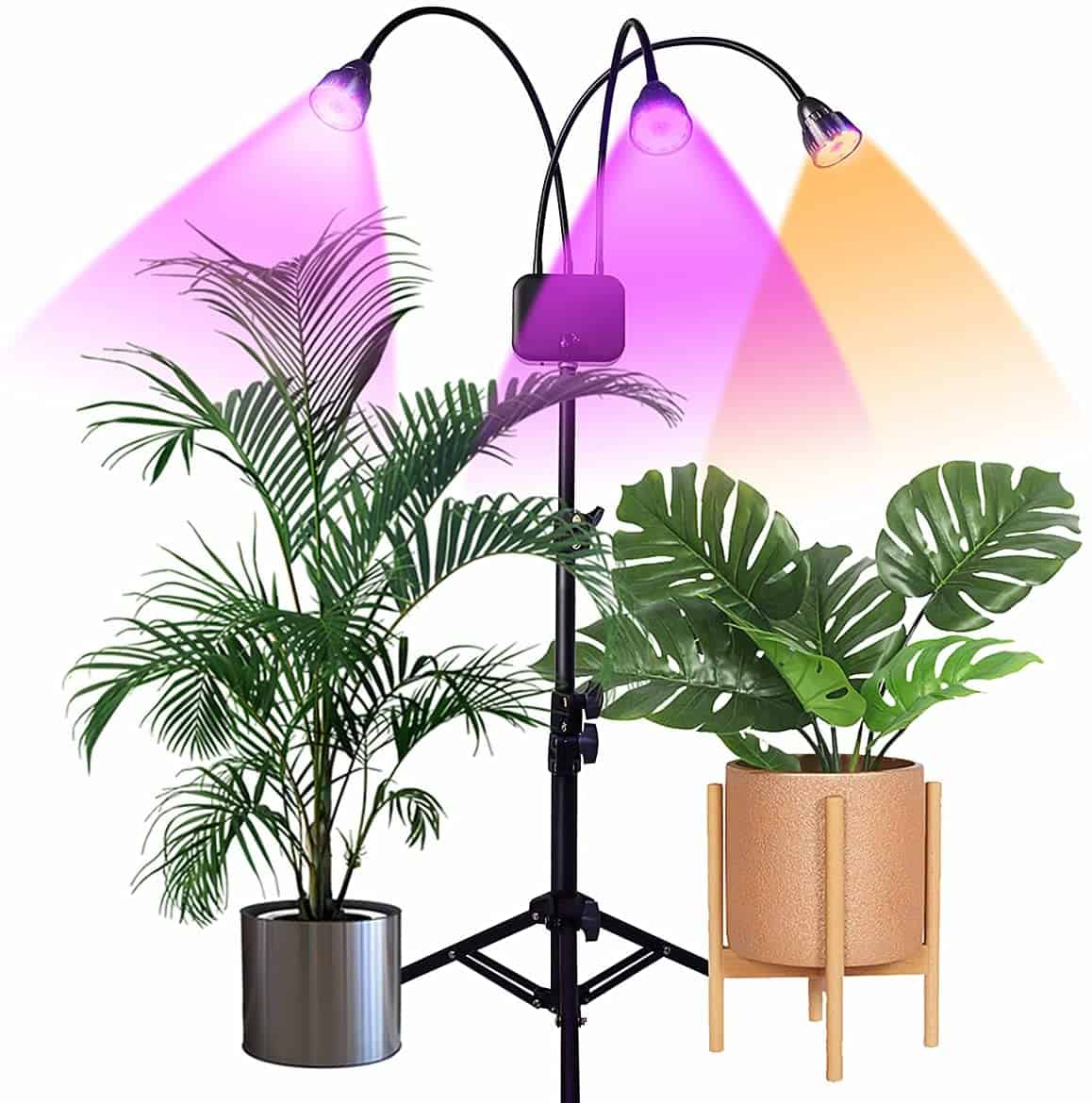
As the plant is flowering species, it is better to use full-spectrum light. These lights support the red and blue spectrum responsible for flower and vegetative growth.
2. Adequate Watering
In the native environment, Anthurium polyschistum grows in partial shade, where the soil is consistently moist. Hence you need to mimic the same setting for them to thrive well indoors.
Besides, if growing your Anthurium in a 5-inch pot, consider watering about 750 ml.
Signs of Watering Issues in Anthurium polyschistum
Anthurium polyschistum requires adequate watering. However, remember that its soil should not be soggy. The plant is more prone to overwatering than the issue of underwatering.
Generally, Anthurium shows similar signs in both cases. However, the way to identify the problem is by inspecting the leaves.

Do you feel the leaves dry and crispy? If so, the plant is underwater. In contrast, it is over water if the leaves are soft and limp.
Here are a few common symptoms of underwatering and overwatering.
- Yellowing of the foliage
- Discoloration and bleached foliage
- Drooping and wilting of foliage
- Stunted growth
- Leggy and dull appearance
Note: Prolonged exposure to soggy soil invites bacterial and fungal growth in the soil. These sort of anaerobic activities in the soil encourage root rot accompanied by foul order.

Tips to Water Anthurium Polyschistum Properly
- You can measure the soil moisture by using a moisture meter or inserting a stick 2-3 inches deep. If the stick feels moist, wait for a couple of days until the soil dries.
- Alternatively, Consider watering the plant after 25-35% of the soil is dry.
- Avoid using water consisting of excessive salts and harmful chemicals.
- Use either tepid or room temperature water and avoid extreme water.
- Empty the saucer immediately after the water gets collected. You do not want roots to sit in a pool of water.
- Lastly, you can also opt for a self-watering pot. They are helpful if you are forgetful.
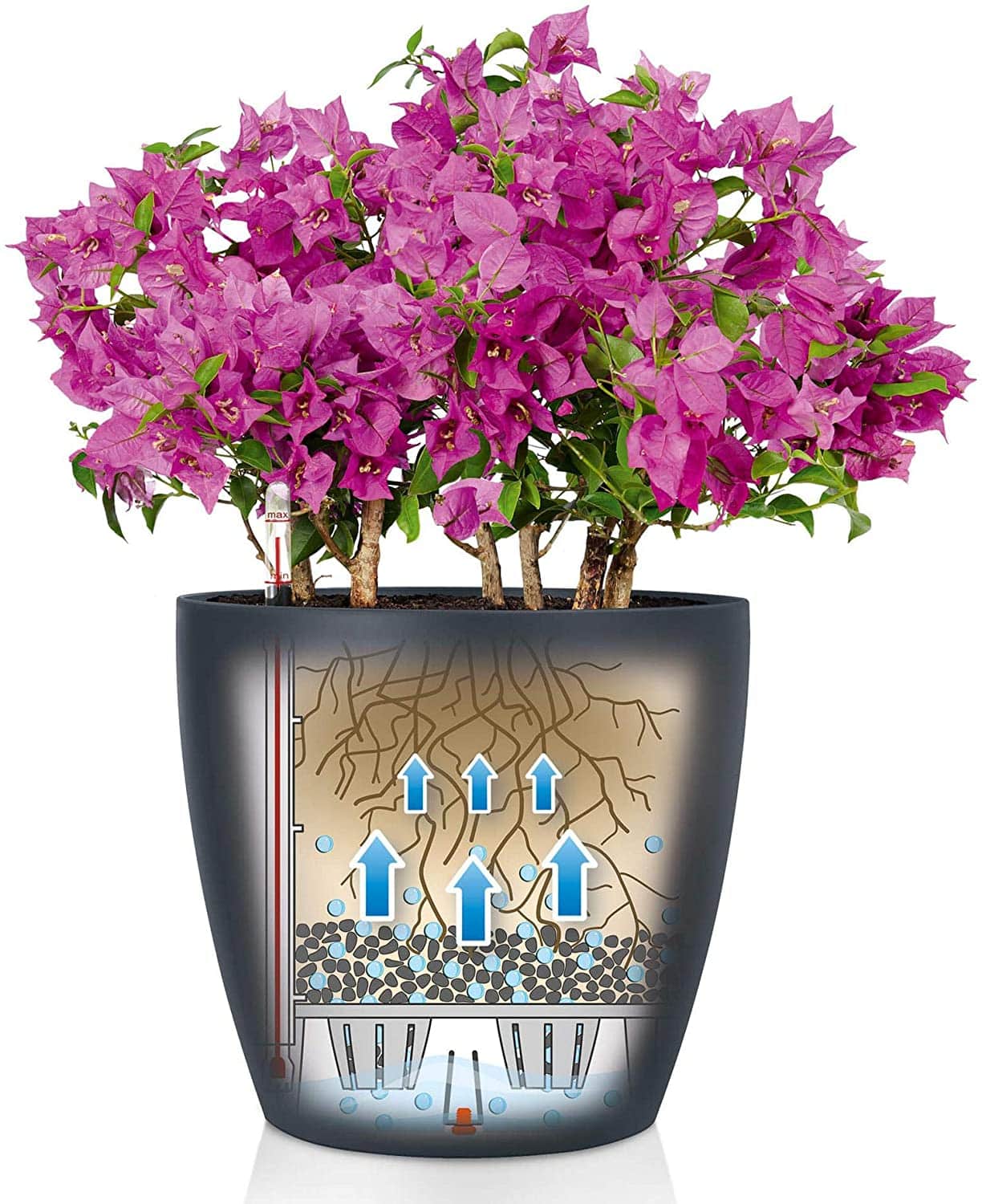
3. Warm Temperature
The low temperature causes the freezing of the water stored in the cell. As the tension grows, the cell might burst.
Consequently, the damage in the cell hinders the overall physiological functioning of the cell.
Besides, anything above 85 degrees Fahrenheit is also harmful. High temperature causes a high transpiration rate accompanied by curling, drooping, browning of the edges, and wilting of the leaves.
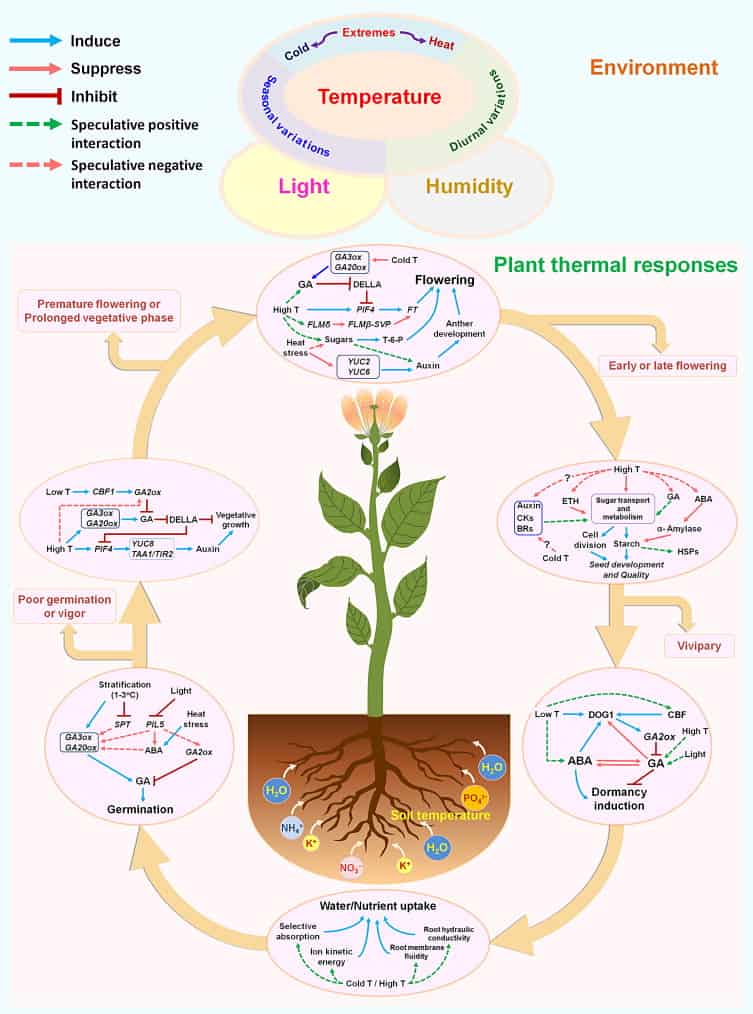
Similarly, temperature extremities also lead to the yellowing of leaves, stunted growth, and severe stress, ultimately resulting in the death of the plant.
You can grow them outdoors if you live in USDA hardiness zones ten or higher. However, it might be fatal to leave them outdoors during freezing nights. Hence, ensure to bring them indoors at night.
Tips to Maintain Ideal Temperature Anthurium Polyschistum
- If the temperature grows high, increase the humidity around the plant. It helps to counterbalance the moisture loss from the leaves.
- Similarly, placing the plant in a sunny location doubles the negative effect of high temperature. Thus, avoid direct sun by drawing a light curtain.
- Frost blankets and heating pads are other alternatives to protect plants from cold.
- You can insulate the soil to prevent temperature loss. Try using mulch such as straw or dried grass on the top layer of the soil.
- Never place them near drafty areas or heating and cooling vents like radiators and heaters.
- Alternatively, you can prevent the baby plant from temperature extremities by introducing them to a mini greenhouse or terrarium.
- Lastly, artificial grow lights provide both warmth and light. So, it might be an excellent option to maintain a conducive environment.

4. High Humidity
Here is a brighter side to the Anthurium polyschistum. It generally requires high humidity but is not highly selective about moisture.
However, it can grow in average room humidity too. I have been raising the polyschistum in the average moisture, and the plant is doing pretty well.
Despite that, I encourage maintaining a high environment for problem-free growth.
Low humidity in them might cause curling, drooping, and liming of leaves. Likewise, it causes stunted and dull growth.

Tips to Maintain High Humidity for Anthurium Polyschistum
- Regular misting of the leaves within 4-5 days is beneficial.
- You can use the pebble tray method. Simply place a tray full of wet pebbles underneath the pot. It helps to increase humidity as the water evaporates.
- Another natural way to increase humidity is a grouping of plants. Nevertheless, it simultaneously increases the chances of disease and pest spread.
- Alternatively, you can place the plant close to humid areas like the kitchen or bathroom.
- Another effective way is to use an electric humidifier to increase humidity artificially.
5. Well-draining Nutrient-Rich Soil
Anthurium polyschistum needs an excellent base to stand out, be robust, and be healthy.
Besides, the soil should retain the optimum moisture while draining the rest of the water.
Hence, the substrate should be consistently moist for Anthurium. Nevertheless, the soil should not be waterlogged as it causes fungal infection.
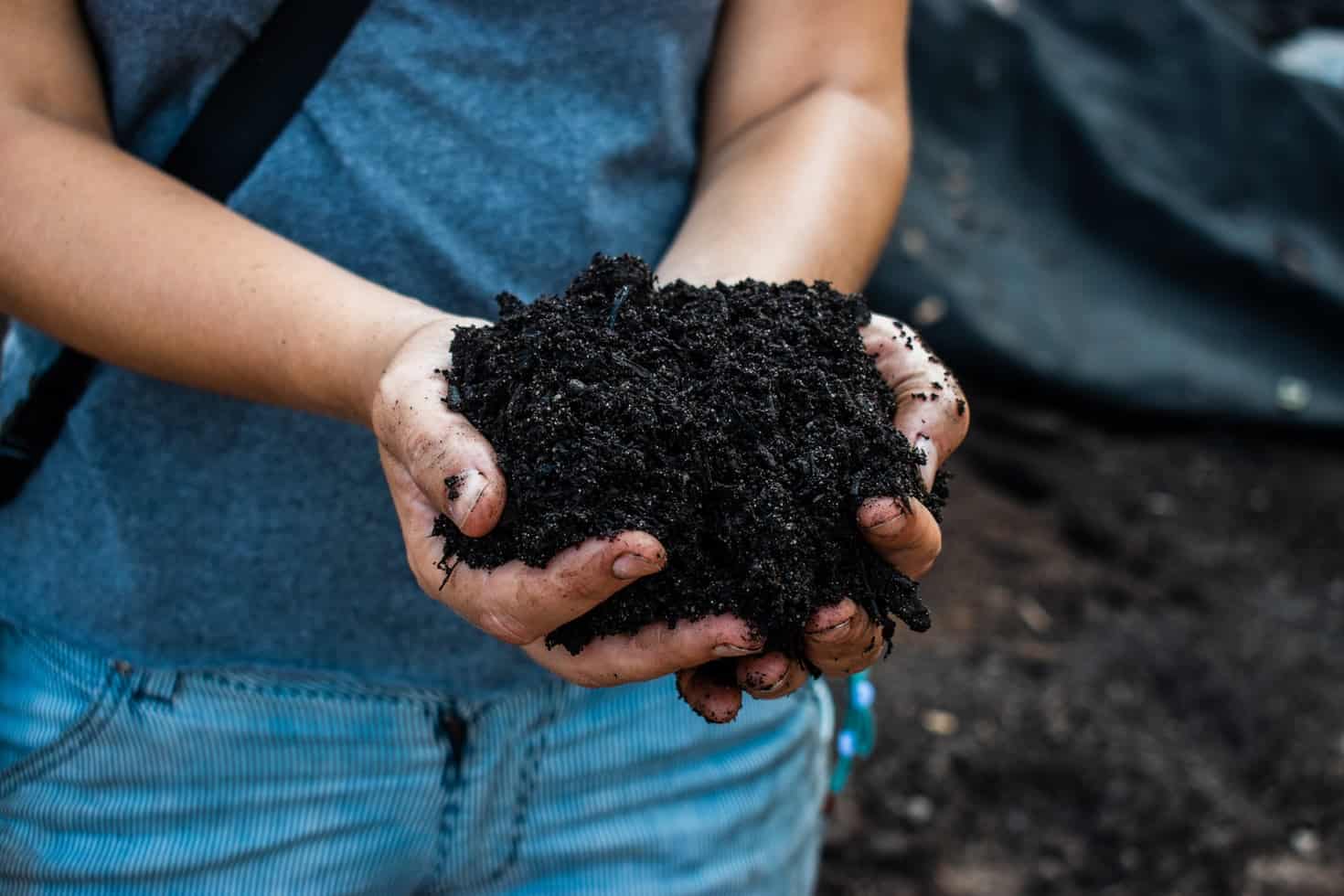
Similarly, the soil should not be compacted. Highly compacted soil compresses the tiny air pockets present in the soil.
Hence, the roots get mechanically affected due to soil pressure in one way. Similarly, it vanishes the air pockets in the soil, consequently choking the plant.
Thus, I recommend avoiding pure garden soil or soil with a fine clay-like texture as it causes high compaction.
If you wonder which soil mix to use for your Anthurium polyschistum, I advise using either orchid or African violet mix.
Here are a few commercial mixes suitable for false marijuana plants.
- Miracle-Gro potting Mix
- Sun Bulb 5011 Better-Gro Phalaenopsis Mix
- Espoma AP8 8-Quart Organic Potting Mix
- Dr. Earth Pot of Gold All-Purpose Potting Soil
- Espoma AV4, Organic African Violet Potting Mix
Make Own Soil Mix
Generally, I do not go for commercial mixes. I always make my soil mix based on the plant’s requirements. Here is the recipe I use for Anthurium polyschistum.
- Mix one part of the orchid or African violet mix
- Add one part of perlite or pumice. It helps to make soil porous while holding moisture.
- One part of coco peat or sphagnum moss. It helps in moisture retention.
- One part of organic compost. It maintains soil quality while supplementing essential nutrients.
- 1/3 part of coarse sand
- 1/3 part of charcoal
Quick Hack: Use rice husk, pine barks, charcoal, vermiculite, dried grass, etc to make the soil light and porous.
Additionally, pH is essential for proper nutrient absorption and toxin filtration.

6. Monthly Fertilization
Although Anthurium polyschistum is not a heavy feeder, you need to fertilize them regularly.
Indications of fertilization requirements include smaller-sized and shrunk leaves and dull, leggy, and stunted plant growth. If you see such signs, buckle up, your plant is starving.

Usually, I use an organic fertilizer as it nourishes both plants and soil. Likewise, it makes the soil light and retains moisture essential to Anthurium.
However, if you use synthetic fertilizer, you can opt for chemical fertilizer rich in nitrogen, phosphorous, and potassium.
Use time-released 16-5-11 plant food or liquid-soluble Anthurium fertilizer for your Anthuriums.
Tips to Fertilize Anthurium Polyschistum Properly
- Always ensure to water the plant beforehand fertilizing. Moisture present in the soil helps in the absorption of nutrients.
- Always dilute the fertilizer to 1/3 of its strength for the Anthurium polyschistum.
- Fertilize the plant only during spring and summer. Avoid fertilization during winter as the plant goes under dormancy.
- In case of overfertilization, take a shallow container filled with tepid water. Drench the pot in it for about 30 minutes.
- Afterward, take the pot out. The process helps to wash off accumulated salts through osmosis.
- However, if the effect is high, you can neutralize the harm by using 1 gram of Osmcote 14-14-14 or Nutricote 13-13-13.
- Lastly, add fertilizer only to the soil. Avoid leaves and stem contact as it causes burning and mechanical stress.

7. Growth Rate
Anthurium polyschistum’s palmate leaves deceive one baffling as a hemp variety. In the natural environment, the plant grows terrestrially and, on finding support, holds grab of it and climbs along.
More interesting about it is its seeds are carried away by birds and other pollinators.
The seeds germinate into a whole new plant upon finding a suitable condition. Therefore, you might sometimes find them growing down for a tree surface.
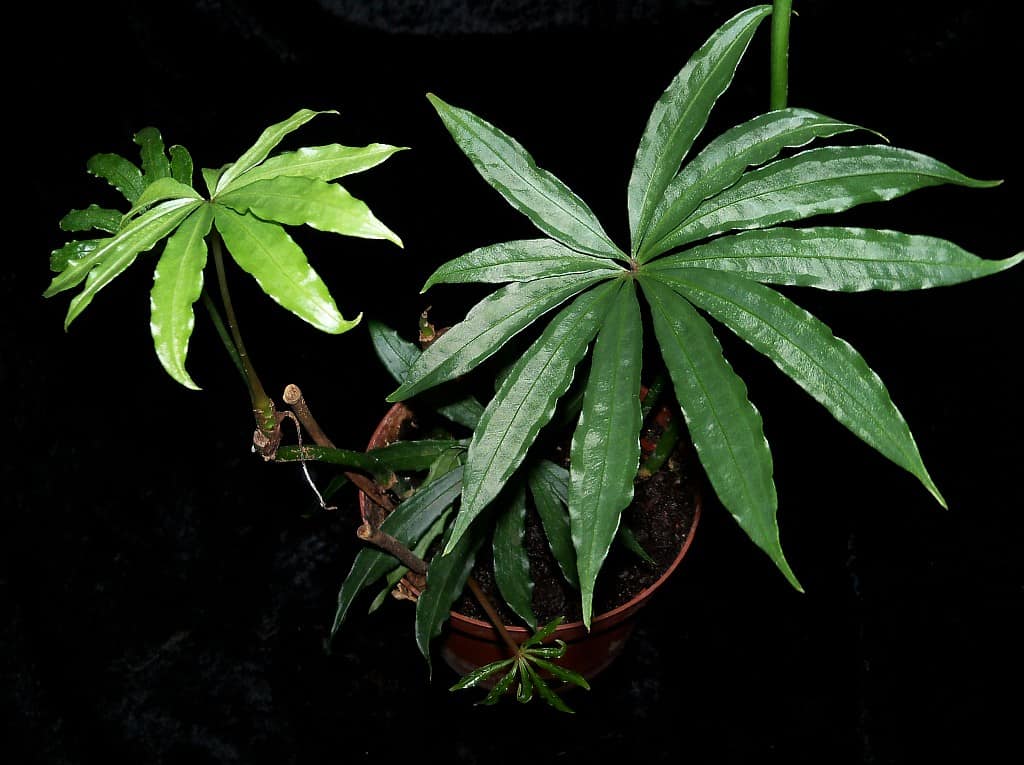
In addition, the plant resembles another variety of Anthurium with a generic name Dactylophyllium.
Internodes on the stem are dark green and semi-glossy, with a grayish cast. The petioles are strong “D” shaped, although they can also be canaliculate with a “C” form.
The leaf blades on the adaxial surface (top) are thin and slightly shiny but matte and paler beneath.
8. Flowering Habits
Anthurium polyschistum bears an inflorescence consisting of a spadix and spathe supported by a peduncle. The inflorescence is greenish or white.
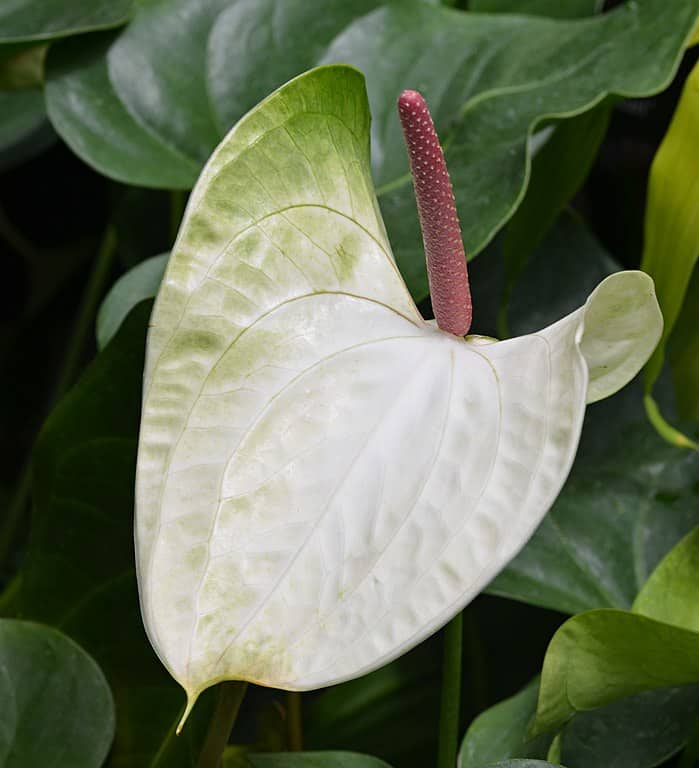
As the flower cannot pollinate itself, it requires external pollinators like wind or birds. Hence, it is rare to see seeds while growing them indoors.
In their native environment, the plant produces tiny violet-purple berries. Moreover, its berries are edible and are usually feasted upon by birds and other rainforest fauna.
9. Potting and Repotting
Generally, you can use any pot of your choice for Anthurium polyschistum. But I prefer terracotta/ clay or hanging baskets made of coconut husk for polyschistum.
These pots are better compared to plastic and cement pots. The reasons are that they support good soil aeration, has a good drainage system, maintain soil temperature, and ooze out extra moisture.
Otherwise, you can opt for any pot about 2 inches larger than the diameter of the rootball.

Repotting Anthurium Polyschistum
Anthurium polyschistum is a slow to moderate growerer. Thus, it does not require frequent repotting.
In addition, Anthurium polyschistum shows a few tell-tell signs signifying the need for repotting. They are;
- Stunted, leggy, and dull growth
- Discolored and yellowed leaves
- Leaf shrinkage
- Limping and drooping of leaves and stem
- Roots protrude out of the drainage holes.
- Roots are excessively bound or entangled.
Before repotting your Anthurium polyschistum, let us begin with the materials required. Here are all of the essentials necessary.
- A clean pot soaked in bleach or vinegar solution.
- Fresh potting Mix
- Gardening Gloves
- Pruning Shears
- Rubbing alcohol with a concentration of about 75% for sterilization
- Trowel
- Garden fork
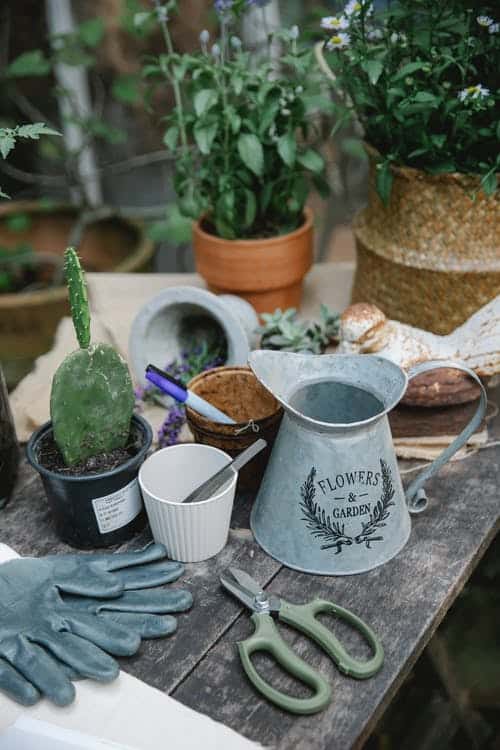
Steps to Repot Anthurium Polyschistum
- Water the plant the previous day before repotting.
- Gently take the plant out of the pot. You might take the help of a trowel and garden fork to loosen the soil while taking the plant out.
- Inspect for signs of root rot. If the roots are mushy, cut them off. Similarly, trim off all the dead and damaged foliage.
- Take a clean pot, preferably 2 inches larger than the earlier one.
- Next, half-fill the pot with the correct soil mix. Place the plant in the same depth as in the previous container.
- Afterward, fill the remaining space with soil and water it thoroughly.
- Leave the plant in a bright space and watch it grow.
Note: Due to the transplant shock, the plant might appear droopy and wilted. Stay calm as the plant will revive naturally after necessary adaptation.
10. Occasional Pruning
Anthurium polyschistum does not require frequent pruning. Prune only if it has outgrown the size for maintenance.
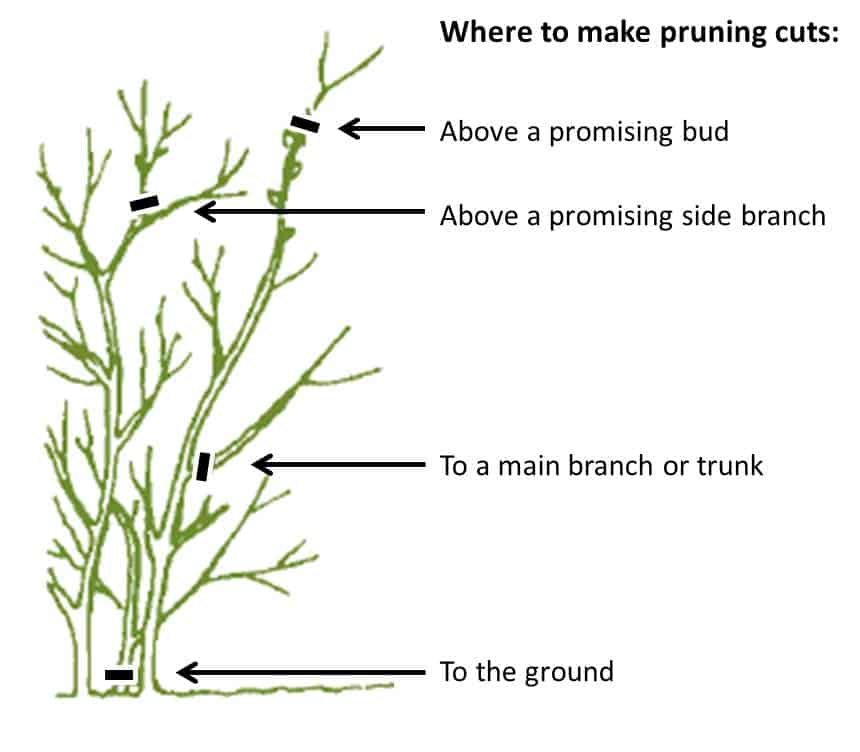
Likewise, prune only the dead and damaged leaves, stems, and roots. Pruning is essential if the plant has undergone pests or disease infestation.
Note: Pruning the plant when it is actively growing might push back its growth.
Also, avoid pruning more than 30% of a part simultaneously, as it stresses the plant. Similarly, always use sterilized pruning shears while pruning.
Toxicity of Anthurium Polyschistum
All varieties of Anthurium are toxic to both humans and pets.
Anthurium polyschistum contains crystals of calcium oxalates; hence it is unsafe to contact or ingest Anthurium polyschistum because of the toxic chemical.
Therefore, be careful that you keep your tour plant away from the reach of children and pets.
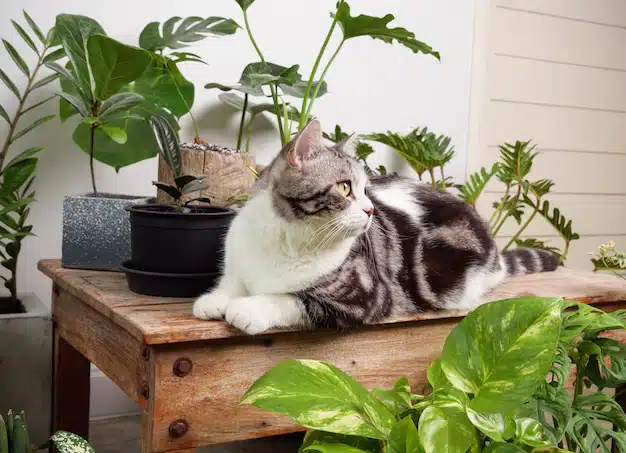
Contacting its sap might irritate the contacted surface, and it is especially vulnerable to eye irritation.
Besides, ingesting them causes nausea, vomiting, swollen mouth, breathing difficulties burning sensation in the alimentary tract and stomach.
Likewise, in pets, it causes drooling, pawing at the mouth, irritability, and a burning sensation in the oropharynx.
Seek medical assistance as soon as possible if you are showing such symptoms. For pets, contact on the following details.
- American Association of Poison Control Center at (800) 222-1222
- ASPCA Poison Center at (888) 426-4435
Propagation Method for Anthurium Polyschistum
It is always fun to multiply other sister plants from a single plant. And, it might be good news that propagating Anthurium polyschistum involves simple and easy steps.
Here are the methods of propagation for Anthurium Polyschistum;
- Splitting of roots or offset division
- Stem cuttings
- Germination of Seeds.
Anthurium possesses both male and female gametes in the same flower. Therefore, it requires external pollinators for pollination to produce seeds.
Thus, propagating Anthurim polyschistum via seeds is only for the pro-growers. It isn’t easy to harvest seeds while growing them indoors and having only a single plant.
1. Propagate via Root Division
It is one of the easiest methods with higher chances of successful propagation. As the plant possesses roots and shoots, propagation is faster than other methods.
Step 1: Water the plant thoroughly the previous days before undergoing propagation.
Afterward, gently tug the plant out of the pot. If the plant does not come easily, pat around the perimeters of the pot.
Likewise, you can take the help of a trowel and fork to loosen the soil for an easy way out.
Step 2: Clean out the soil around the roots. Then, inspect for the offshoots. You can take as many as you like unless the sapling has a few roots and leaves.
Ensure that the offset is free from pests or disease infestation.
Step 3: Now, separate the offset from the mother plant’s roots. You can take the help of a sharp sterilized knife to separate the offset from the mother plant’s roots.
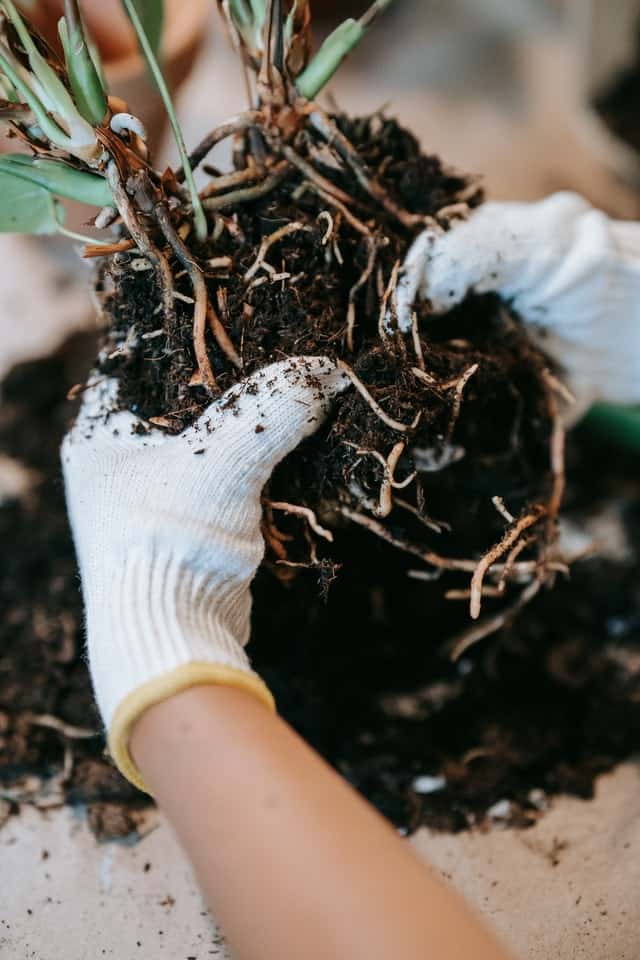
Step 4: Now, the offset is ready to be propagated. You can directly plant the offset in the soil or place it in water.
In Soil Medium
- Take a clean pot and half-fill it with soil.
- Then, place the offset and fill the rest of the space with soil.
- Afterward, water the plant through and leave it in a bright, diffused light.
In Water Medium
- Take a clean, transparent jar filled with water.
- Then, place the plant and leave it in a bright space.
- Lastly, always remember to change the water within 3-4 days.
2. Propagate via Stem Cutting
It is an easy, simple, and fast method of propagation. Let us dive directly into the steps.
Step 1: Inspect for a healthy stem with nodes. It is better if you can find nodes along with aerial roots.
Step 2: Take sterilized pruning shears and incision below the nodes.
You can take as many cuttings as you like. However, ensure that each of the cuttings has at least a node.
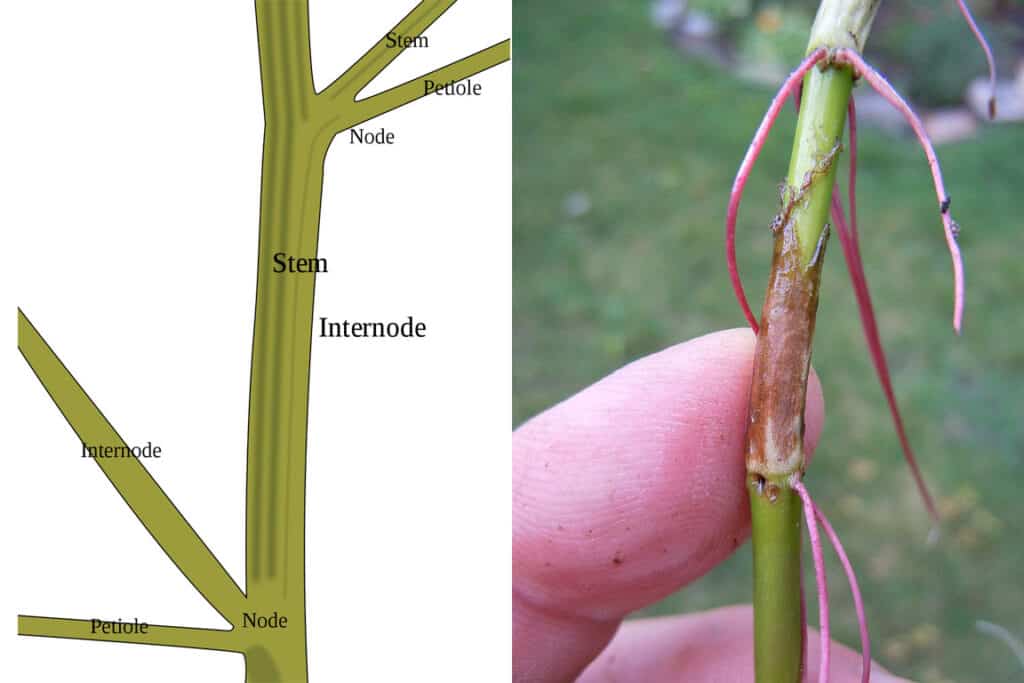
Step 3: Leave the cuttings for a couple of hours for callous formation. Next, dust the cuttings with the rooting hormone.
You can also dust them with cinnamon powder to prevent root rot.
This step is optional, but I highly recommend it for a better result.
Step 4: You can plant the cuttings directly in the soil or place them in water for rooting.
Follow the same steps I mentioned above for both sorts of propagation.
Generally, the stems will start rooting within 3-6 weeks.
Also watch,
Common Problems in Anthurium polyschistum
1. Pests Infestation
Generally, the Anthurium polyschistum is resilient against pest infestation. But interestingly, its requirement for high humidity increases the risk of pest infestation.
High humidity always equals a higher risk of pests and disease infestation.
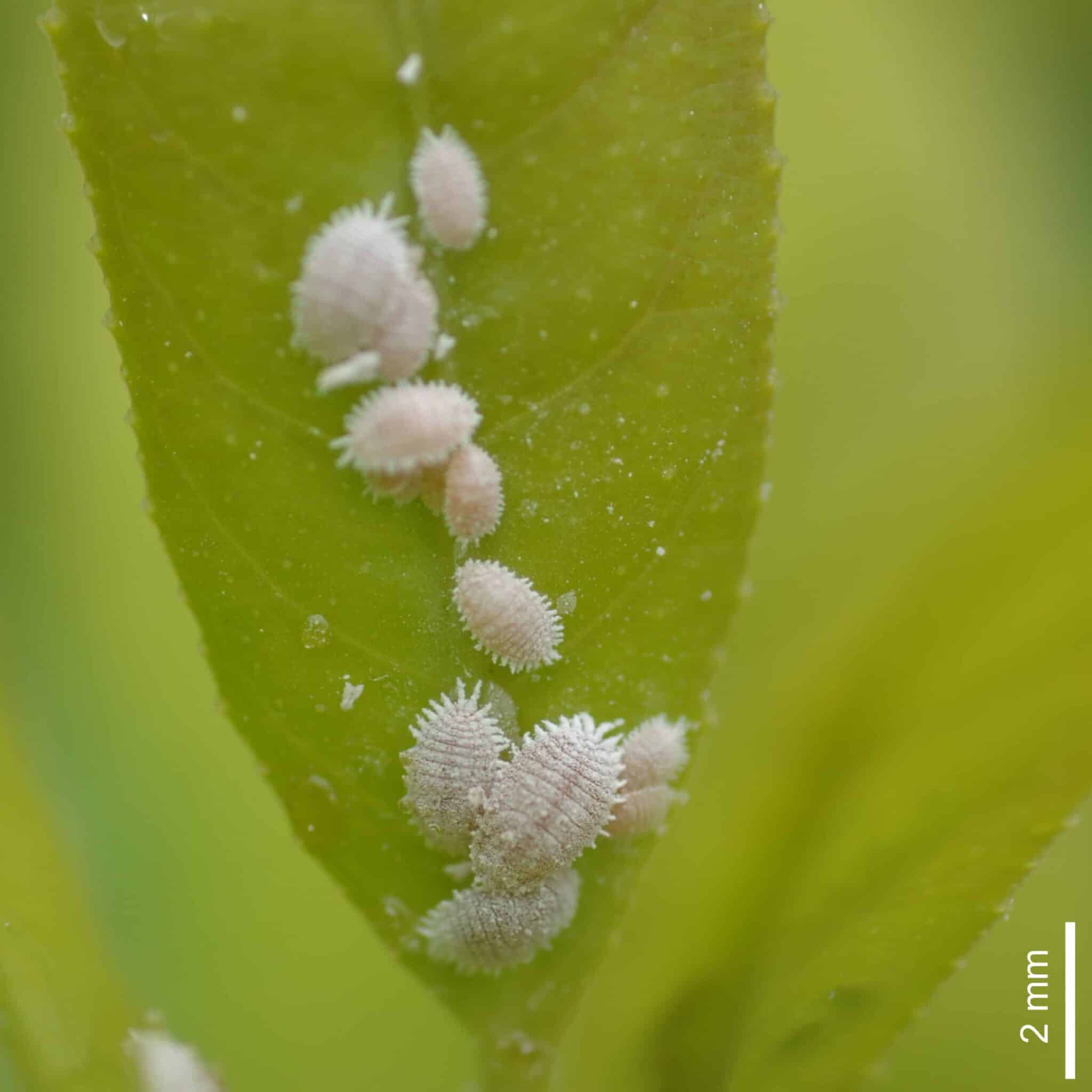
Here is a table containing additional information about these pests and their symptoms.
| Common Pests | Signs and symptoms |
|---|---|
| Mealybugs | White cotton like waxy bugs wrapped on the undersides of the leaves. Curling, wilting, and drooping of foliage. |
| Aphids | Grey or black-colored tiny insect on the leaf surface. |
| Scales | Brown or black bumpy lumps appear leaf's undersides. Wilting and drooping of leaves. |
| Thrips | Silvery grey or shimmering white patches on the leaves. |
Treatment for Pests Infestation
- First, take sterilized pruning shears and deadhead all of the infected parts.
- Immediately apply either insecticidal soap or neem oil.
- Take a cotton ball. Dip it in isopropyl alcohol and move it along the infected parts.
- A blast of water helps in washing off pests and their eggs.
- Take a blunt knife and scrape off the scales.
Note: Use synthetic insecticides containing Pyrethrin if the infestation is severe. However, ensure to follow the guidelines or label mentioned by the manufacturer.
Preventive Measures
- Always inspect the plant before bringing them home.
- Avoid grouping the plant with other infected plants.
- You can also opt for an Aphids-free commercial potting mix.
- Spray the plant weekly with soap water and wipe them off to knock off pests.
- Sneek a peek at your plant regularly for signs of infection. Treat immediately to prevent severe damage.
- Giving a shower to the plant once a fortnight is helpful to wash off pests and their eggs.
2. Disease Infestation
Here is a table containing diseases, their causative agent, and symptoms in the Anthurium polyschistum.
| Common Diseases | Causative Agent | Signs and symptoms |
|---|---|---|
| Black Nose Disease | Colletotrichum gloeosporioides | Dark, sunken lesions or water marks on leaves and stem. Chances of spread increases in rainy season. |
| Bacterial Blight | Xanthomonas axonopodis | Water-soaked lesions appear along the leaf margins. The patches grows large, brown, and brittle. |
| Leaf Spot Fungus | Colletotrichum (anthracnose) | Small round or irregular shaped brown/black patches on leaves. |
| Root Rot Disease | Phytophthora and Pythium | Sudden wilting and drooping of leaves and stem. Foul oder form the soil Root appears dark and mushy |
Treatment for Diseases
- Immediately deadhead all of the affected parts using sterilized pruning shears.
- In the case of root rot, prune all of the mushy parts. Then, repot it in a new potting mix after applying fungicide.
- Fungal infections like the black nose can be treated using fungicides containing copper, Benomyl, or Mancozeb.
- You can use a phosphorous acid-based fungicide to prevent bacterial wilt and infection.
- Also, treat bacterial blight by spraying Agromycin all over the plant.
Preventive Measures
- Avoid misting leaves at night. Prolonged exposure to the water mists makes your Anthurium susceptible to disease.
- Segregate your plant from other infected plants.
- Avoid overhead and overwatering.
- You can apply fungicides twice a year.
3. Leaf Burn
The primary reason for leaf burn in Anthuriums is high temperature, high-intensity sunlight, and overfertilization.

Overfertilization accumulates salts in the soil. The accumulated salts first burn the roots and gradually spread to the leaf.
Similarly, high temperatures and harsh sunlight cause a high rate of transpiration. It causes moisture loss from the leaves, and thus they turn brown and crispy and often get burned.
You may follow the care instructions mentioned above for these issues.
Frequently Asked Questions About Anthurium Polyschistum
Is Anthurium polyschistum Easy to Care?
Although Anthurium polyschistum is a rare and unusual variety, its care requirements are not different from other Anthurium varieties.
It demands sufficient light, high humidity, warm temperature, and regular feeding.
Sneak a peek at your Anthurium polyschistum regularly, and follow all the care requirements. Given that, it is easy to care for them.
Can I Use Coffee Grounds for Anthurium polyschistum?
Coffee Grounds serve as fertilizer along with maintaining the acidic soil pH. It does an excellent purpose for plants demanding a slightly acidic pH.
However, the pH requirement of Anthurium polyschistum is generally neural with tolerance towards slightly acidic soil.
Hence, it might not be best to use coffee grounds. Instead, it is highly effective to use fish emulsion or bone meal.

Is Anthurium Polyschistum Air Purifier?
According to NASA’s clean air study, Anthuriums can detoxify your space by cleansing harmful toxins like formaldehyde, ammonia, toluene, and xylene.
Hence, Anthurium polyschistum lets you inhale toxin-free air when grown indoors.
Also watch,
Wrapping Up…
Anthurium polyschistum indicates a pure tropical rainforest vibe.
If you want a splash of greenery, warmth, and pleasure for your eyes, get an Anthurium polyschistum.
If you provide a conducive environment for them, they will reward you with health and decor benefits. Polyschitum can be an ideal unique décor and plant that inspects your health.
Why wait for long when you have mastered the caring tips for Anthuriums?
Happy Gardening!


